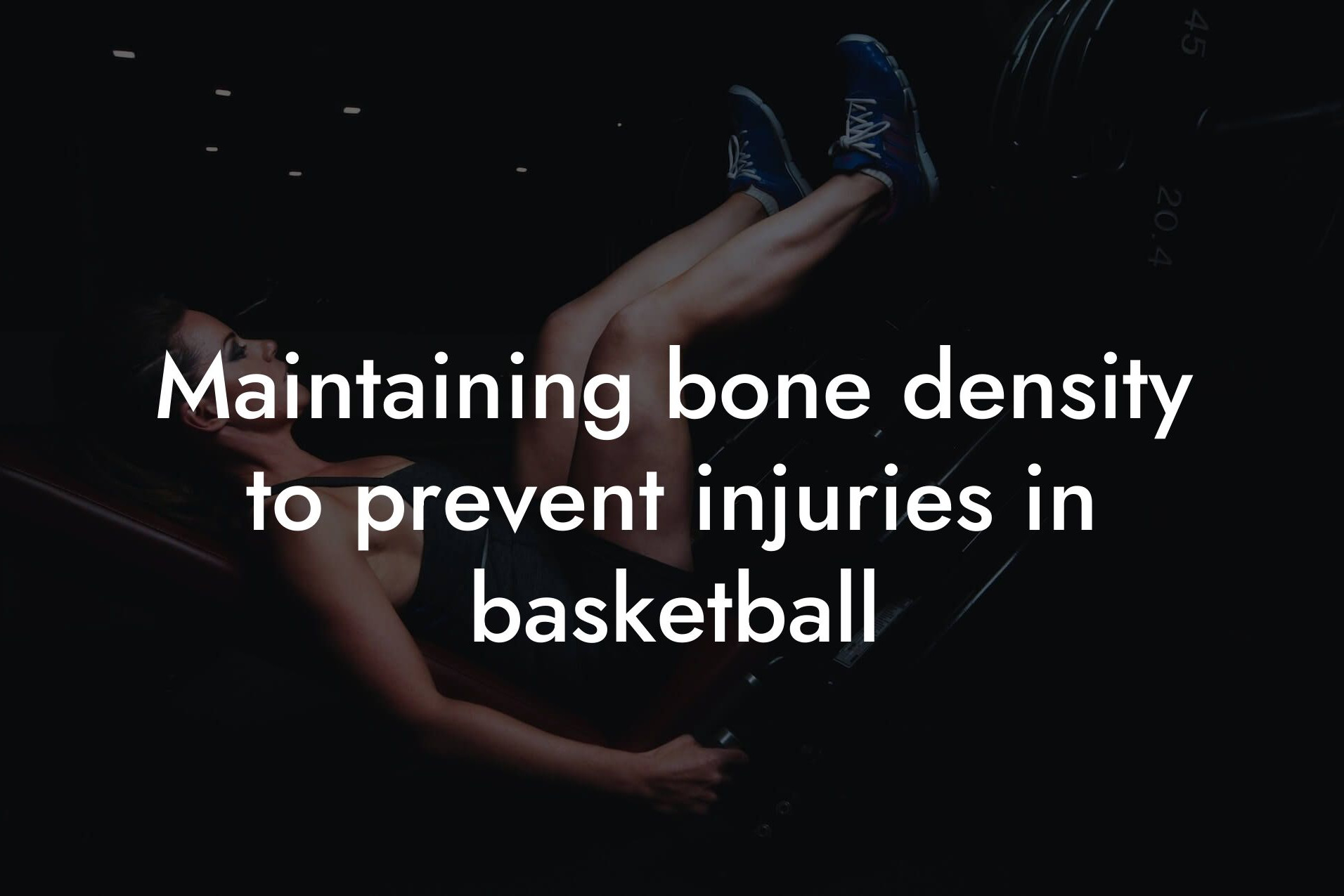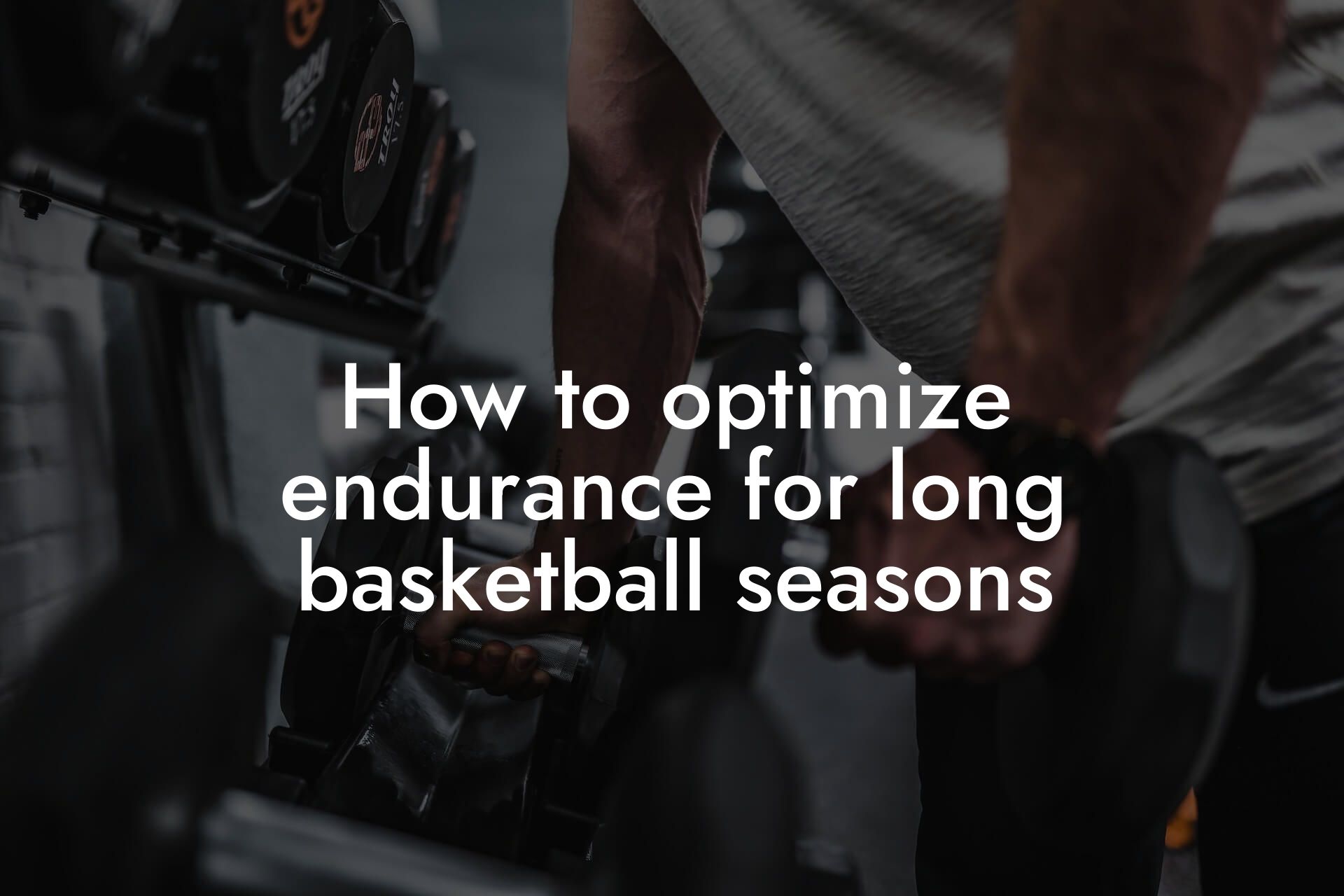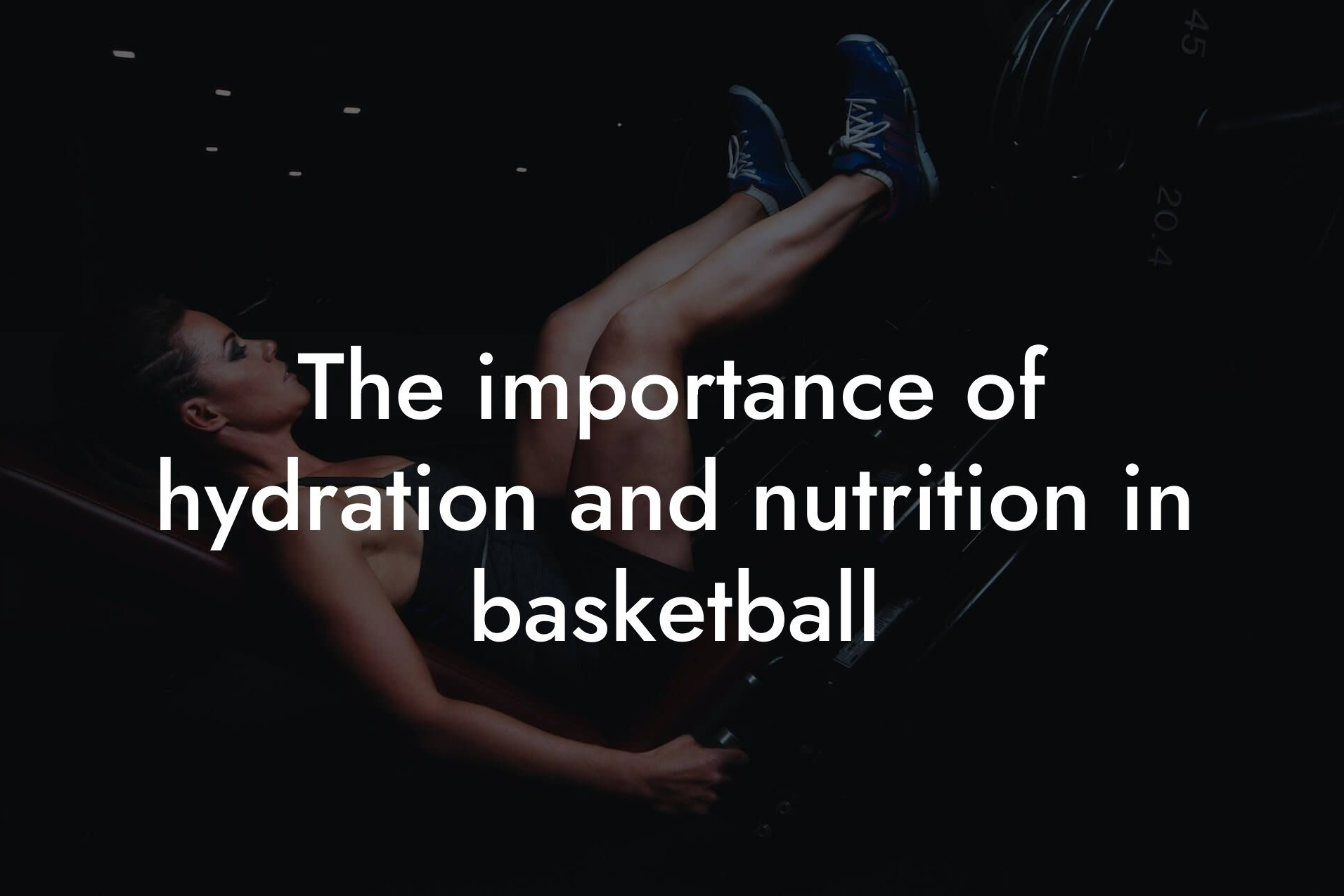As a high-earning professional, you understand the importance of maintaining a strong and healthy physique to excel in your career. For basketball players, a well-structured strength and conditioning program is crucial to improve performance, reduce the risk of injury, and gain a competitive edge. At Tano Performance Group, we recognize the significance of a comprehensive body assessment, which is why we utilize advanced DEXA technology to provide our clients with a detailed understanding of their body composition. In this article, we will delve into the world of strength and conditioning programs specifically designed for basketball players, covering the essential components, benefits, and training methods to help you take your game to the next level.
Table of Contents
- Understanding the Demands of Basketball
- Components of a Strength and Conditioning Program for Basketball Players
- Benefits of a Strength and Conditioning Program for Basketball Players
- Periodization and Training Phases
- Sample Training Program for Basketball Players
- Importance of Body Composition Analysis
- Frequently Asked Questions
Understanding the Demands of Basketball
Basketball is a high-intensity, fast-paced sport that requires a unique combination of strength, power, speed, agility, and endurance. Players need to be able to explosively jump, quickly change direction, and sustain a high level of intensity over a prolonged period. To develop an effective strength and conditioning program, it's essential to understand the specific demands of the sport. Basketball players require:
- Explosive power to jump high and quickly
- Speed and agility to rapidly change direction
- Endurance to maintain a high level of intensity over the course of a game
- Strength to resist opponents and maintain position
- Flexibility and mobility to move efficiently and reduce the risk of injury
Components of a Strength and Conditioning Program for Basketball Players
A comprehensive strength and conditioning program for basketball players should include a combination of the following components:
- Resistance training: Building strength through weightlifting, resistance band exercises, or bodyweight exercises
- Plyometric training: Developing explosive power through jump squats, box jumps, and other plyometric exercises
- Speed and agility training: Improving speed, agility, and quickness through drills and exercises that mimic game-like movements
- Endurance training: Building cardiovascular endurance through cardio exercises, such as running, cycling, or swimming
- Flexibility and mobility training: Improving range of motion and reducing the risk of injury through stretching and mobility exercises
- Power training: Developing the ability to generate force quickly through exercises like medicine ball throws and resistance band exercises
- Core training: Strengthening the core muscles to improve stability, balance, and overall athletic performance
Benefits of a Strength and Conditioning Program for Basketball Players
A well-structured strength and conditioning program can have a significant impact on a basketball player's performance and overall health. Some of the benefits include:
- Improved speed, agility, and quickness
- Increased strength and power
- Enhanced endurance and cardiovascular fitness
- Reduced risk of injury
- Improved flexibility and mobility
- Enhanced overall athletic performance
Periodization and Training Phases
A periodized training program is essential for basketball players, as it allows for variation in intensity and volume to avoid plateaus and prevent overtraining. A typical training program for basketball players may include the following phases:
- Off-season: Focus on building strength, power, and endurance through high-intensity training
- Pre-season: Shift focus to speed, agility, and plyometric training to prepare for the upcoming season
- In-season: Maintain strength and endurance through lower-intensity training, while focusing on recovery and injury prevention
Sample Training Program for Basketball Players
Here's a sample training program for basketball players, incorporating the components and training phases discussed above:
| Day | Exercise | Sets | Reps |
|---|---|---|---|
| Monday (Off-season) | Squats | 3 | 8-10 |
| Monday (Off-season) | Deadlifts | 3 | 8-10 |
| Tuesday (Pre-season) | Plyometric Box Jumps | 3 | 10-12 |
| Tuesday (Pre-season) | Agility Drills | 3 | 10-12 |
| Thursday (In-season) | Resistance Band Exercises | 2 | 12-15 |
| Thursday (In-season) | Core Exercises | 2 | 12-15 |
Importance of Body Composition Analysis
At Tano Performance Group, we understand the significance of body composition analysis in optimizing athletic performance. Our advanced DEXA technology provides a detailed breakdown of body fat percentage, lean muscle mass, bone density, and other key metrics. This information is essential for basketball players, as it allows them to:
- Optimize body composition for improved performance
- Monitor changes in body composition over time
- Identify areas for improvement and adjust training programs accordingly
A well-structured strength and conditioning program is essential for basketball players looking to improve their performance, reduce the risk of injury, and gain a competitive edge. By incorporating the components and training phases discussed above, basketball players can optimize their training and take their game to the next level. At Tano Performance Group, we are committed to providing our clients with the tools and information they need to succeed, including advanced body composition analysis through our DEXA technology. By combining a comprehensive strength and conditioning program with a detailed understanding of body composition, basketball players can unlock their full potential and achieve success on the court.
Frequently Asked Questions
What is the importance of strength and conditioning for basketball players?
Strength and conditioning are crucial for basketball players as they enhance overall performance, reduce the risk of injuries, and improve game longevity. A well-structured program helps players develop the necessary strength, power, speed, agility, and endurance to excel on the court.
What are the key components of a strength and conditioning program for basketball players?
A comprehensive program should include exercises that focus on strength training, power development, plyometrics, agility and speed training, endurance training, and injury prevention. A balanced program should also incorporate flexibility, mobility, and recovery techniques.
How can strength training improve my basketball performance?
Strength training helps basketball players develop the power and force needed to explosively jump, accelerate, and decelerate on the court. It also enhances muscular endurance, allowing players to maintain a high level of intensity throughout the game.
What are the benefits of plyometric training for basketball players?
Plyometric training, such as jump squats and box jumps, improves a player's ability to explosively jump and quickly change direction. This type of training enhances muscular power, acceleration, and deceleration, making players more effective on the court.
How can agility and speed training improve my basketball performance?
Agility and speed training help basketball players develop quick reactions, rapid changes of direction, and rapid acceleration and deceleration. This type of training enhances a player's ability to create space, evade opponents, and quickly move around the court.
What is the importance of endurance training for basketball players?
Endurance training helps basketball players develop the cardiovascular fitness needed to maintain a high level of intensity throughout the game. It also enhances muscular endurance, allowing players to recover quickly between plays and maintain their performance throughout the game.
How can injury prevention exercises benefit basketball players?
Injury prevention exercises, such as exercises that strengthen the ankles, knees, and core, help reduce the risk of common basketball injuries. These exercises improve joint stability, strength, and flexibility, allowing players to perform at a high level while minimizing the risk of injury.
What is the role of flexibility and mobility in a strength and conditioning program for basketball players?
Flexibility and mobility exercises, such as stretching and foam rolling, help improve range of motion, reduce muscle tension, and enhance athletic performance. They also reduce the risk of injury and improve recovery between games and practices.
How can recovery techniques, such as foam rolling and self-myofascial release, benefit basketball players?
Recovery techniques help reduce muscle soreness, improve circulation, and enhance recovery between games and practices. They also improve flexibility, reduce muscle tension, and promote overall athletic performance.
What is the ideal duration and frequency of a strength and conditioning program for basketball players?
The ideal duration and frequency of a strength and conditioning program vary depending on the player's goals, experience, and current fitness level. Generally, a program should consist of 2-3 strength training sessions, 2-3 conditioning sessions, and 1-2 recovery sessions per week, with each session lasting 45-60 minutes.
How can I incorporate strength and conditioning exercises into my busy schedule?
To incorporate strength and conditioning exercises into a busy schedule, prioritize exercises that work multiple muscle groups at once, focus on high-intensity interval training, and utilize efficient exercises that can be completed in a short amount of time.
What are the benefits of working with a strength and conditioning coach or personal trainer?
Working with a strength and conditioning coach or personal trainer provides personalized guidance, corrects form and technique, and helps players achieve their specific goals. A coach or trainer can also create a customized program tailored to the player's needs and goals.
How can I measure the effectiveness of my strength and conditioning program?
The effectiveness of a strength and conditioning program can be measured by tracking improvements in strength, power, speed, agility, and endurance. Players can also monitor their game performance, injury rate, and overall feeling of fatigue and recovery.
What are the common mistakes basketball players make when it comes to strength and conditioning?
Common mistakes include inadequate warm-up and cool-down, poor exercise form and technique, insufficient recovery time, and failure to incorporate exercises that target all major muscle groups.
How can I stay motivated and consistent with my strength and conditioning program?
To stay motivated and consistent, set specific and achievable goals, track progress, and celebrate small victories. Find a workout buddy or join a training group to increase accountability and motivation.
What is the role of nutrition in a strength and conditioning program for basketball players?
Nutrition plays a critical role in a strength and conditioning program, providing the necessary fuel for optimal performance and recovery. A balanced diet that includes adequate protein, complex carbohydrates, and healthy fats helps support muscle growth, repair, and recovery.
How can I incorporate nutrition planning into my strength and conditioning program?
To incorporate nutrition planning, work with a sports dietitian or nutritionist to develop a personalized meal plan that meets specific caloric and macronutrient needs. Focus on whole, nutrient-dense foods, and avoid processed and high-sugar foods.
What are the benefits of periodized training for basketball players?
Periodized training involves alternating periods of high-intensity training with periods of low-intensity training. This approach helps avoid plateaus, promotes continued progress, and reduces the risk of overtraining and burnout.
How can I modify my strength and conditioning program during the off-season?
During the off-season, focus on building strength, power, and endurance through a combination of strength training, plyometrics, and conditioning exercises. Incorporate exercises that target all major muscle groups, and prioritize recovery and nutrition to support muscle growth and repair.
What are the benefits of incorporating technology, such as wearable devices and apps, into a strength and conditioning program?
Incorporating technology into a strength and conditioning program provides valuable data and insights on performance, recovery, and progress. It also helps players stay motivated and accountable, and provides real-time feedback and guidance.
How can I balance my strength and conditioning program with my basketball training?
To balance strength and conditioning with basketball training, prioritize exercises that complement basketball skills, such as agility and speed training. Incorporate strength training exercises that target specific muscle groups used in basketball, and avoid exercises that may interfere with basketball performance.
What are the benefits of incorporating yoga or Pilates into a strength and conditioning program for basketball players?
Incorporating yoga or Pilates into a strength and conditioning program helps improve flexibility, balance, and core strength. It also enhances recovery, reduces muscle tension, and improves overall athletic performance.
How can I incorporate strength and conditioning exercises into my basketball warm-up and cool-down?
Incorporating strength and conditioning exercises into a basketball warm-up and cool-down helps improve performance, reduce the risk of injury, and enhance recovery. Examples include dynamic stretching, plyometrics, and resistance band exercises.
Here are some related articles you might love...
- Maintaining bone density to prevent injuries in basketball
- How to optimize endurance for long basketball seasons
- The importance of hydration and nutrition in basketball
- How body composition impacts vertical leap in basketball
- The role of DEXA scans in monitoring basketball player health
- Off-season training for professional basketball players
- The impact of muscle mass on basketball agility and speed
- Reducing body fat for optimal basketball performance
- Nutrition tips for sustaining energy during basketball games
Zak Faulkner
Zak Faulkner is a leading authority in the realm of physical health and body composition analysis, with over 15 years of experience helping professionals optimise their fitness and well-being. As one the experts behind Tano Performance Group, Zak has dedicated his career to providing in-depth, science-backed insights that empower clients to elevate their physical performance and overall health.
With extensive knowledge of DEXA technology, Zak specializes in delivering comprehensive body assessments that offer precise data on body fat, muscle mass, bone density, and overall physique. His expertise enables individuals to make informed decisions and achieve their fitness goals with accuracy and confidence. Zak’s approach is rooted in a deep understanding of human physiology, combined with a passion for helping clients unlock their full potential through personalised strategies.
Over the years, Zak has earned a reputation for his commitment to excellence, precision, and client-focused service. His guidance is trusted by top professionals who demand the best when it comes to their health. Whether advising on fitness programs, nutritional strategies, or long-term wellness plans, Zak Faulkner’s insights are a valuable resource for anyone serious about taking their health and fitness to the next level.
At Tano Performance Group, Zak continues to lead our Content Team revolutionising how professionals approach their physical health, offering unparalleled expertise that drives real results.




